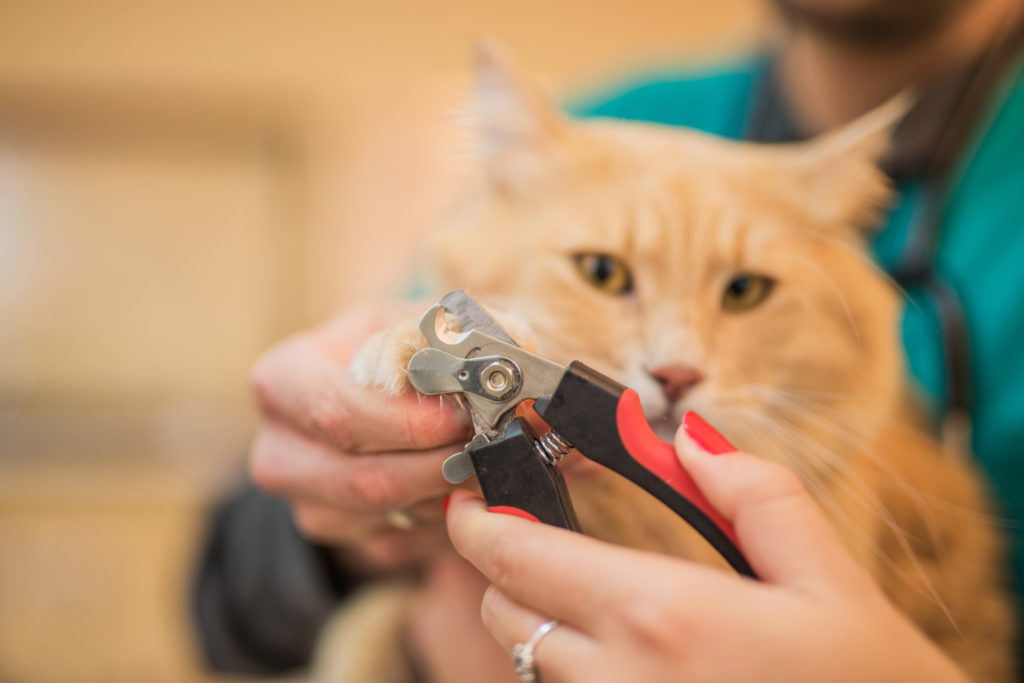Trimming your cat’s nails is essential for their health, and it doesn’t have to be a painful experience for either of you. Overgrown nails will not only scratch humans and surfaces, but they also can dig into your cat’s pads as well as cause tendon damage and foot deformities. Here’s some tips on how to trim your cat’s nails.
First Steps
If you have a kitten, start gently handling their paws and claws at an early age. But even if you got Fluffy later in life, you can still start this process. The key is to get your pet used to gentle handling in non-grooming situations. Verbal praise, gentle petting, and treats will also help this process.
Important Considerations
Many cats will lie down or sit in your lap while you groom them. However, other cats will violently resist this process. Hence, some type of restraining device is necessary.
If you are not experienced with properly restraining a squirming cat, it’s best to enlist the help of a veterinarian or a trained cat groomer. Therefore, you won’t be able to use do-it-yourself methods for trimming your cat’s nails.
Supplies Required
- Cat-specific nail trimmers (these come in several types such as grinders, guillotine-styles, and scissors)
- A styptic pencil containing silver nitrate, which basically acts as a clotting agent in case you cut too much and Fluffy bleeds. However, keep in mind that some cats are as resistant to the pencil as they are to trimmers.
- A towel or a blanket is a good idea to put between your cat and your lap. This not only prevents scratching, but also soothes your pet.
The Process Itself
- Do not just go straight for your cat’s feet or nails; pay your pet other types of attention in a quiet room away from other animals or humans.
- Locate the “quick” — this is usually past the curve of the nail. It is usually pink in cats. Avoid this area, because if you cut it your cat will bleed and experience pain. However, if you do accidentally hit it don’t yell or otherwise cause drama. Apologize, soothe, apply some styptic to stop the bleeding, and lovingly move on.
- Clip the tip quickly and at a slightly forward angle. If you hesitate, you could crush the nail rather than clip it. It’s better to clip too little than too much.

